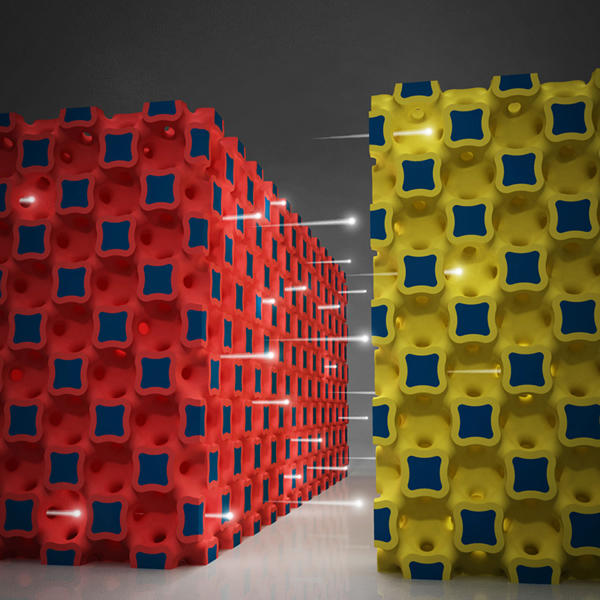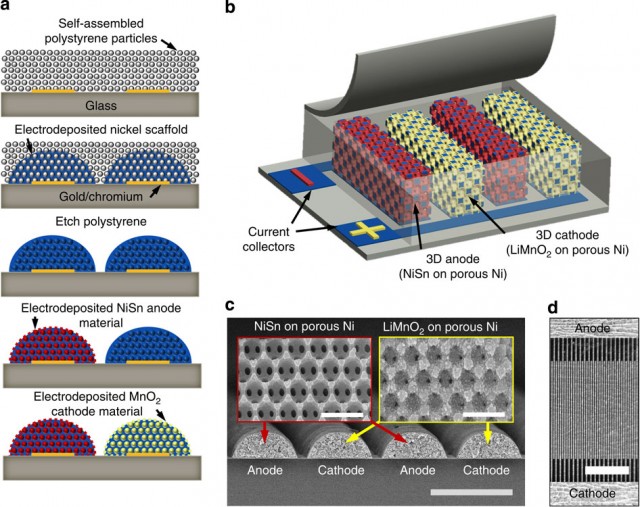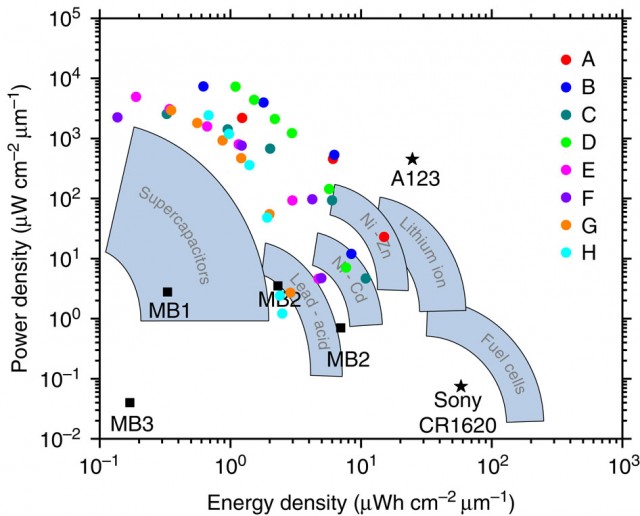Developed miniature supercapacity batteries

Would you like to have a smartphone with a battery from which you can “light a car”? And at the same time, so that it charges for a few seconds? Fantastic - you say. Nevertheless, scientists from the University of Illinois have published their work, which gives us hope to see such super batteries in the future.
This reverses the idea of batteries. It can provide much more power than anyone can imagine. In recent decades, electronics has become more compact. "Thinking" parts of computers also became smaller. A battery - far behind. Our microtechnology can change all this. Now the power supply is as high-performing as everything else.
With modern power sources, the user has to choose between power and capacity. For some applications, a large amount of energy is needed (for example, when transmitting a radio signal over long distances). Capacitors are able to quickly release it, but at the same time stocking it only in small quantities. For other tasks, like long listening to the radio, you need a large source capacity, such as fuel cells and batteries, for example. But they donate electricity rather slowly.
Batteries created by the team under the leadership of William King (William P. King), allow you to create uncompromising batteries, giving out high power and at the same time having high capacity. Moreover, with the help of a simple adjustment of the production process, it is possible to vary the ratio of these parameters.
')
As is known, the effectiveness of a battery directly depends on the surface area of its electrodes. The team was able to significantly increase it with the help of the following process. First, a layer of polystyrene is applied to the glass substrate. Then electrolytic nickel, which serves as the basis for future cathodes, is “introduced” into this structure, and polystyrene balls are etched. Nickel-tin is deposited on the resulting spongy surface by electroplating - on the anode and manganese dioxide - on the cathode. The whole process is illustrated in the following illustration:

The result is a structure with a huge surface area, freeing up more free space for chemical reactions.
Scientists have managed to create a battery format "microbattery". The graph below shows its comparison with a conventional Sony CR1620 battery:

With such batteries, it is possible, for example, to transmit a radio signal over a distance of 30 times more than with conventional power sources or to reduce the size of a battery by 30 times. In addition, the batteries are able to charge 1000 times faster than modern ones. Impressive, isn't it?
Currently, scientists are working on the integration of their batteries with other electronic components, as well as developing a production process that will allow them to be launched into a series at an affordable price.
Source: https://habr.com/ru/post/177037/
All Articles